Hiring global tech talent can be tricky, but these 5 proven methods help you evaluate candidates while minimizing risks:
- Online Code Testing: Use platforms like HackerRank or Codility to assess coding skills with real-time monitoring, AI analysis, and automated grading.
- Paid Test Projects: Assign small, compensated projects to evaluate real-world performance and productivity.
- Automated Skills Testing: Platforms like Testlify combine coding, cognitive, and communication tests for a complete assessment.
- Team Programming Events: Try hackathons, pair programming, or code reviews to evaluate teamwork and technical expertise.
- Structured Video Interviews: Use video calls to assess technical skills, communication abilities, and remote work readiness.
Quick Comparison
| Method | What It Tests | Best For | Key Tools |
|---|---|---|---|
| Online Code Testing | Coding skills | Early screening | HackerRank, Codility |
| Paid Test Projects | Practical performance | Mid-stage evaluation | Custom projects |
| Automated Skills Testing | Technical + behavioral | Pre-interview stage | Testlify, other platforms |
| Team Programming Events | Teamwork + problem-solving | Advanced screening | Hackathons, pair coding |
| Structured Video Interviews | Communication + fit | Final evaluation | HireVue, VidCruiter |
These methods ensure you hire the right talent while avoiding costly mistakes.
1. Online Code Testing
Online code testing platforms help businesses reduce hiring risks by offering structured assessments. Companies like HackerRank are used by over 3,000 organizations, including Fortune 100 firms, to streamline their technical hiring processes.
These platforms include features designed to improve the assessment experience:
| Feature | Benefit to Businesses |
|---|---|
| Real-time Monitoring | Prevents plagiarism and ensures assessments are genuine. |
| AI-powered Analysis | Evaluates code quality and flags AI-generated code. |
| Automated Grading | Standardizes evaluations, reducing potential bias. |
| Multi-language Support | Supports diverse tech stacks and global hiring needs. |
"Codility enables us to shorten the feedback loop between the stakeholders. We solved the pain points by digitizing one piece of the puzzle – the technical assessment. Today, we bring the best talent into the organization by being agile and flexible."
To get the most out of these tools, consider these strategies:
- Role-Specific Tests: Design assessments tailored to the job. For instance, when hiring backend developers, focus on server-side challenges instead of frontend tasks.
- Balanced Scoring: Prioritize core functionality over complete code coverage. For example, in .NET development, 80% code coverage is a common standard but shouldn’t be the only metric.
- Real-World Scenarios: Use platforms like Codility to create company-specific coding questions or simulate collaboration with virtual whiteboards. Codility has assessed over 8 million engineers across 43 countries.
Pricing depends on the platform. TestDome charges $20 per candidate for small-scale use and $7 per candidate for high volumes. HackerRank offers packages starting at $599 per month.
"Codility helps us remove bias by ensuring a consistent, equal, and fair process for every candidate at LiveRamp."
Recent AI updates now allow these platforms to generate custom technical questions and track progress in real time. However, while these tools are powerful, they work best as part of a broader hiring strategy rather than as a standalone solution.
2. Paid Test Projects
Paid test projects offer a practical way to evaluate global tech talent while reducing hiring risks. They also ensure candidates are compensated for their efforts. For instance, CareMinds provides a no-risk trial period, enabling companies to assess developers’ skills in real-world scenarios before committing to a long-term hire.
Here’s how to structure a paid test project effectively:
| Component | Description | Best Practice |
|---|---|---|
| Project Scope | Define deliverables and limits | Use SMART criteria: Specific, Measurable, Achievable, Realistic, Timely |
| Timeline | Set milestones and deadlines | Include 2-3 checkpoints for reviewing progress |
| Success Metrics | Outline evaluation criteria | Focus on both quality (e.g., code quality) and efficiency metrics |
| Compensation | Fair payment for work done | Follow industry-standard rates ($31-50/hour for skilled developers) |
To measure success, use clear and actionable metrics. For example, quality metrics like defect detection efficiency or how well test cases perform can highlight code quality. Productivity metrics, such as development speed and resource use, can help gauge efficiency. Many companies also track defect density and test coverage for a more in-depth evaluation.
"A good metric is one that contributes to the right decisions in a timely way based on fact rather than feeling." – Thomas Augustine and Charles Schroeder
To avoid project drift, set clear acceptance criteria, realistic deadlines, and maintain open communication. Document all requirements thoroughly to prevent scope creep. Ensure each component in the table is well-defined to keep the project on track.
Structured test projects have been shown to improve hiring results. For example, a SaaS startup reported a 35% boost in sales performance after implementing a detailed assessment process that included paid trial periods.
3. Automated Skills Testing
Automated skills testing takes structured evaluations a step further, making global tech talent assessment faster and more efficient. These platforms combine technical and behavioral evaluations, offering a comprehensive view of a candidate’s abilities while saving both time and money.
Here’s how top companies structure their automated testing process:
| Assessment Type | Purpose | Key Metrics |
|---|---|---|
| Technical Skills | Evaluate coding abilities | Code quality, problem-solving skills |
| Cognitive Ability | Test logical reasoning | Pattern recognition, logical thinking |
| Domain Knowledge | Measure industry expertise | Technical accuracy, best practices |
| Communication | Assess collaboration potential | Language proficiency, clarity |
These metrics provide a clear understanding of a candidate’s strengths. For instance, Endiprev improved their screening process by 75% using Testlify’s platform.
How to Implement Automated Skills Testing
- Customize Assessments
Design tests tailored to the job role with 8–10 questions per skill area, starting with basic tasks and progressing to more complex challenges. - Use Varied Question Formats
Incorporate a mix of methods such as coding challenges, document editing tasks, audio responses, and multiple-choice questions to evaluate a wide range of skills. - Track Key Metrics
Monitor critical data to measure the effectiveness of your testing. On average, 80% of applicants complete these tests, leading to up to an 82% reduction in time-to-hire and candidate satisfaction rates as high as 94%.
"Testlify is the skills assessment platform helping companies hire the best talent quickly, easily, accurately, and, yes, affordably. Recruiting at scale is complex, time-consuming, and risky, and we take the stress out of finding the best candidates with deep analysis that’s accurate, automated, and unbiased." – Testlify
Virtual Gurus successfully implemented automated testing across multiple areas by combining coding tasks with technical evaluations. Abby Belin, their VP of Operations, highlighted how this approach significantly improved their ability to identify qualified candidates.
Features to Look For in a Testing Platform
For the best results, choose a platform that offers:
- A wide range of test libraries across technical domains
- Advanced proctoring tools
- Video response options to evaluate communication and personality
- Seamless API integration with HR systems
- Multi-language support for global hiring
This strategy works well with broader evaluation methods. Data shows companies using automated skills testing can cut time-to-hire by up to 82% and boost recruitment efficiency by as much as six times.
sbb-itb-a3fbb4e
4. Team Programming Events
Team programming events are a great way to assess technical skills, teamwork, and problem-solving under pressure. These structured group challenges offer a hands-on look at how candidates perform in real-world scenarios.
Event Formats That Work
Combining technical tasks with team dynamics is key to successful programming events. Here’s a breakdown of formats that work well:
| Event Type | Duration | Focus Areas | Team Size |
|---|---|---|---|
| Mini Hackathons | 4–8 hours | Problem-solving, creativity | 3–4 developers |
| Pair Programming | 2–3 hours | Code quality, communication | 2 developers |
| Code Review Sessions | 1–2 hours | Technical expertise, feedback skills | 2–3 developers |
Setting Up Effective Evaluation Criteria
To fairly evaluate participants, focus on three main areas:
- Technical Competency
Look at code quality, problem-solving approaches, solution design, optimization techniques, bug fixes, and adherence to coding standards. - Collaboration Skills
Observe how candidates communicate ideas, work through disagreements, and support their teammates. - Project Delivery
Evaluate the team’s ability to meet goals, manage time, present their solutions, and adapt to unexpected challenges.
Practical Organization Tips
Here are some tips to ensure your event runs smoothly:
- Set clear, measurable objectives that align with your company’s goals.
- Assign mentors to guide teams, but ensure they don’t interfere with the process.
- Base challenges on real-world problems your organization has encountered.
- Use collaborative coding tools for remote or distributed teams.
This hands-on approach complements other testing methods by showing how candidates perform in team-based, real-time scenarios.
"If you can’t measure it, you can’t improve it." – Peter Drucker
Measuring Success
To get the most out of team programming events, focus on gathering actionable insights:
- Use pre-event surveys to understand participant expectations.
- Track engagement levels during the event itself.
- Collect feedback from both participants and evaluators afterward.
- Monitor conversion rates to see how many participants move forward in the hiring process.
These steps help ensure your programming events are effective and provide valuable insights for your hiring team.
5. Structured Video Interviews
Structured video interviews are now a key part of remote technical assessments. According to research, 86% of HR professionals report faster hiring processes when using video platforms. These interviews not only test technical skills but also provide insights into a candidate’s communication style and how well they align with your team dynamics.
Setting Up for Success
To ensure a smooth interview process, prepare your technical setup and assessment framework carefully:
| Component | Requirements | Best Practices |
|---|---|---|
| Platform | Reliable video conferencing software | Have a backup platform ready |
| Internet | Stable high-speed connection | Prepare a secondary connection |
| Equipment | HD camera and clear audio | Use a professional-grade headset |
| Environment | Quiet, well-lit space | Choose a neutral background |
Structuring Technical Questions
The STAR method (Situation, Task, Action, Result) is a great way to organize technical assessments. Here are three effective approaches to consider:
- Real Code Reviews: Share segments of production code that are incomplete or flawed. Ask candidates to analyze and discuss improvements.
- Remote Collaboration Scenarios: Gauge their experience with:
- Asynchronous communication
- Managing time zone differences
- Virtual pair programming
- Writing clear documentation
- Technical Deep Dives: Create scenarios tailored to your tech stack. Many modern platforms now let candidates solve coding challenges live, giving you a chance to observe their problem-solving in action.
Choosing the Right Platform
Selecting the right platform can make or break the interview process. Based on user feedback, here are some top options:
| Platform | Key Strength | Best For |
|---|---|---|
| HireVue | AI-powered analytics | High-volume hiring |
| VidCruiter | Multi-stage assessments | Technical positions |
| InCruiter | Built-in coding tools | Developer screening |
These platforms streamline the evaluation process, helping you focus on both technical skills and interpersonal qualities.
"The type of questions you make impact how you conduct a technical interview. Question prep is useful, especially when you know what type of employee you want in your team and what kind of answers you want to hear when asking technical questions."
– Ihor Shcherbinin, VP of Recruiting at DistantJob
Assessment Criteria Matrix
To fairly evaluate candidates, use a structured framework like this:
- Technical Proficiency
- Code quality and optimization
- Problem-solving skills
- System design knowledge
- Communication Skills
- Clarity in explanations
- Effective use of technical terms
- Ability to understand and respond to questions
- Remote Work Readiness
- Time management capabilities
- Experience working virtually
- Evidence of self-motivation
Tips for Interviewers
Keep the process consistent by standardizing questions and scoring. Allocate equal time for discussions and problem-solving, record the session (with consent), and provide constructive feedback afterward. This approach ensures a thorough and fair evaluation.
Conclusion
Hiring tech talent globally now requires a well-rounded testing strategy. By combining five key methods, companies can reduce hiring risks and secure top talent.
Building a Strong Testing Framework
Using these methods together delivers better results, with work samples standing out as a strong predictor of job success.
| Testing Method | What It Evaluates | Best Use Case |
|---|---|---|
| Online Code Testing | Technical skills | Early screening |
| Paid Test Projects | Practical job performance | Mid-stage evaluation |
| Automated Skills Testing | Consistent skill assessment | Pre-interview stage |
| Team Programming Events | Collaboration and teamwork | Advanced screening |
| Structured Video Interviews | Communication and team fit | Final evaluation |
This integrated approach works particularly well when exploring new talent markets.
Tapping Into LATAM Talent
Mexico and Brazil together produce 605,000 software engineers annually. U.S. companies have increased remote hiring from South America by 70% in the last three years.
Steps for Implementation
To apply this framework effectively, focus on:
- Define Clear Metrics: Companies like Proxify have improved screening accuracy from 60-70% to 93% by using detailed technical assessments.
- Streamline the Testing Process: With a global developer shortage expected by 2025, efficient and accurate evaluations are critical.
- Prioritize Cultural Fit: Research shows 56% of Latin American professionals value company culture and benefits when choosing jobs.
"Understanding cultural nuances while maintaining rigorous technical standards is key to successful global talent acquisition." – Pavel Tantsiura, CEO of CareMinds
Preparing for the Future
The number of developers in LATAM is growing by 7% annually. Future-proof your hiring by using data-driven recruitment, offering clear career paths, competitive pay, and thorough onboarding. A well-structured testing framework not only addresses current challenges but also ensures your strategy is ready for future talent demands.
















